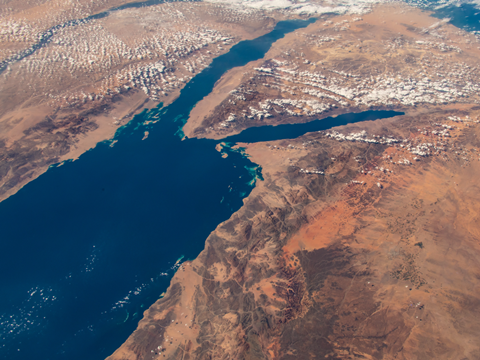
Flexible Packaging Europe (FPE) has attributed the rising prices of European flexible packaging materials in Q1 2024 to shipping disruptions in the Red Sea, driven by ‘escalating tensions’ in the Middle East.
Compared to the end of 2023, prices of most flexible packaging materials underwent ‘modest’ increases in the first quarter of 2024. This is mostly attributed to disruptions in the supply of resin and film due to shipping security issues in the Red Sea, with demand ‘remaining flat’ across all material markets.
Apparently, both HDPE and LDPE continued their upward trend from the second half of 2023, rising by 2.3% and 4.1% respectively. After a 12% increase, 20-micron BOPP film has matched the price it last reached in Q2 2023.
Meanwhile, 15-micron BOPA film rose by 2% and 12-micron PET by 4%, bringing the latter closer to its price in early 2023. Only 60gsm one-sided coated paper remained consistent in price compared to the final three months of last year, FPE says.
Generally, prices are still said to be ‘well below’ the levels at the start of 2023. 60gsm one-sided coated paper was reportedly down by 24%, and aluminium foil by 16%.
On the other hand, prices are still between 27% (BOPP) and 57% (aluminium foil) higher than the benchmark prices in Q1 2020, FPE concludes.
“Prices paid in Europe for flexible packaging materials mostly increased in Q1 2024,” said Santiago Castro from Wood Mackenzie. “This was the case for BOPET, BOPA, and BOPP, which experienced the most significant increase.
“Prices paid for paper remained unchanged, but price increases are expected during Q2 due to increases in the cost of pulp. Aluminium foil saw additional price decreases due to conversion cost reductions.
“Although overall demand has improved for all substrates, mainly this has been due to restocking. End-user demand remains weak, but there are signs of improvement.”
“If anything, there is more uncertainty in the market than there was at the end of last year,” added Guido Aufdemkamp, executive director of FPE. “Escalating tensions in the Middle East generally and the continued threat to shipping in the Red Sea have caused major disruption in the supply chain.
“The war in Ukraine also continues to have an impact, both on supply and wider European demand of packaging materials and packaged goods.
“These issues are not likely to go away in the near future. But it seems the extreme destocking has come to an end in most segments and restocking to a more normal level has begun slowly.
“This factor, combined with a cautious upturn in demand, as prices and inflation stabilize, could mean the market for flexible packaging materials in Europe is set for modest growth later this year.”
In similar news, Wood Resources International pointed to Russia’s invasion of Ukraine as the driving force behind decreased prices and shipments of Russian lumber, tightening hardwood pulplog supply, and uncertainty in the European energy market last year.
Plastics Europe also reported that the German plastics manufacturing industry experienced a significant decline for the second year in a row in 2023; this is thought to come down to high energy prices, increased labour costs, and the resultant production costs.
If you liked this story, you might also enjoy:
The Brief: How viable is biorecycling for plastics?
Report: How the top brands are progressing on packaging sustainability
The Brief: Using ocean-bound plastic in packaging – how, why and should we?












No comments yet